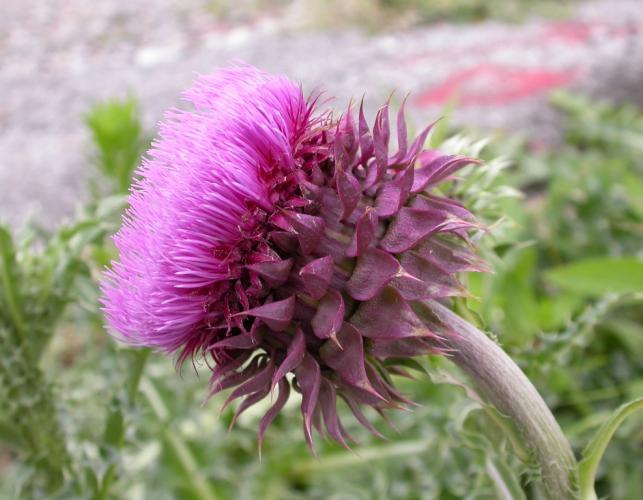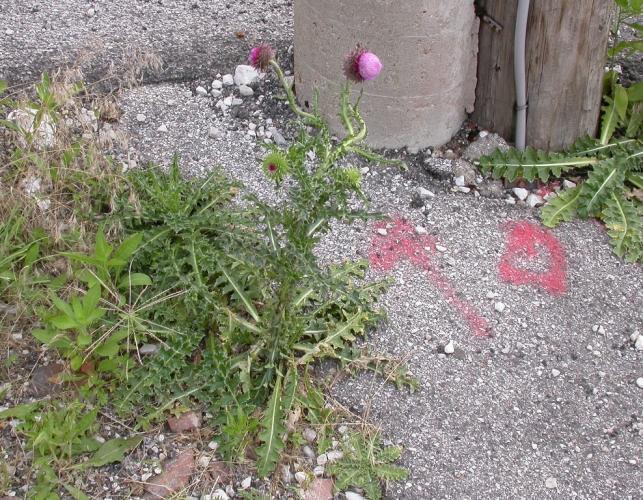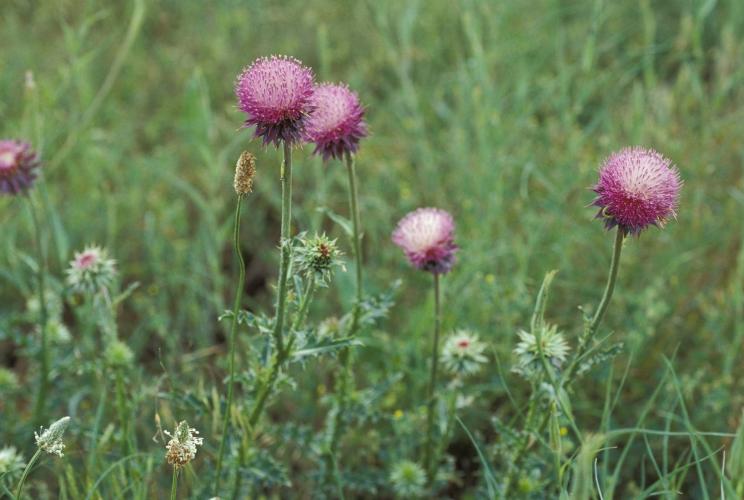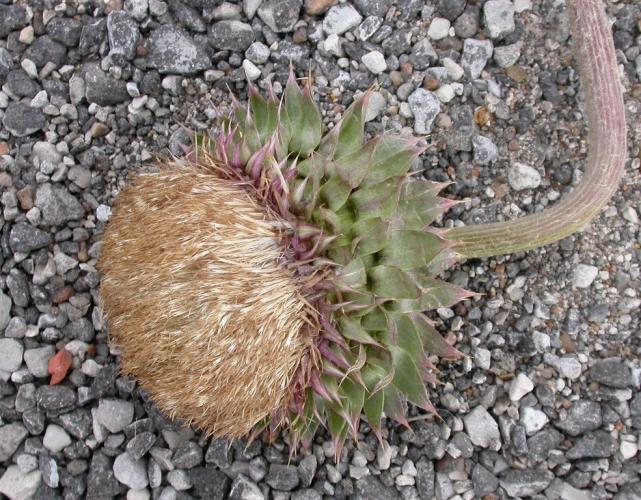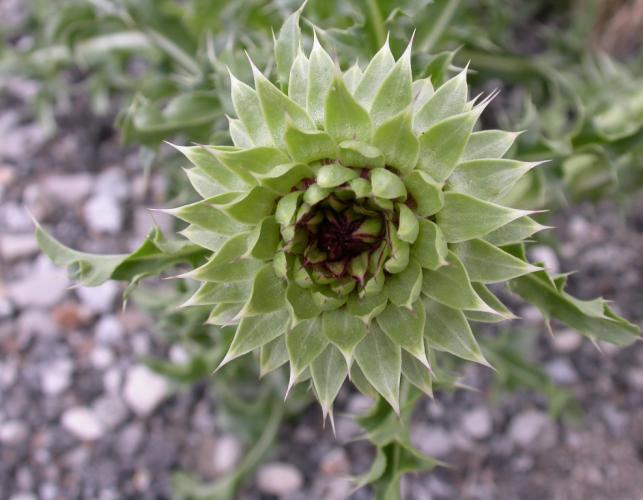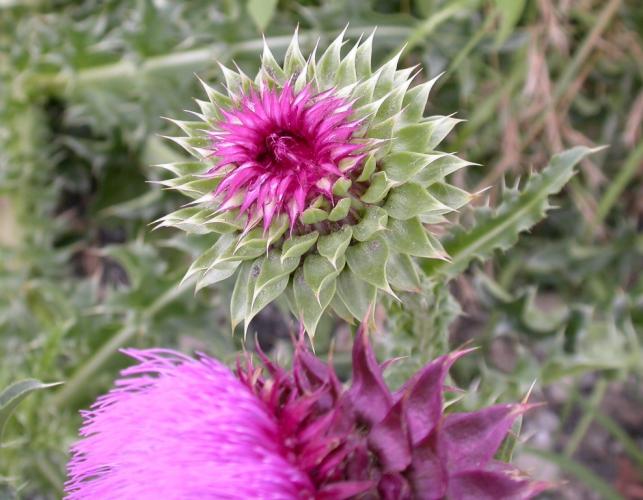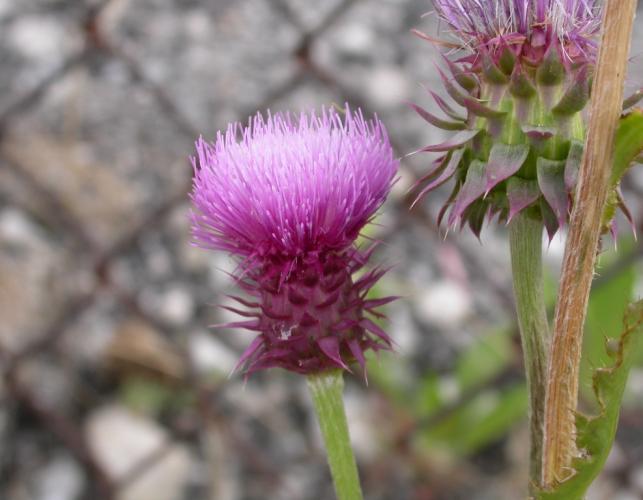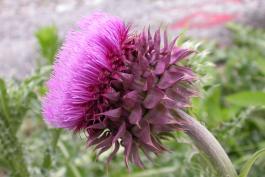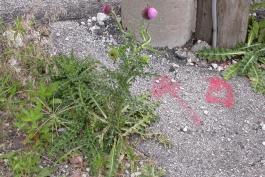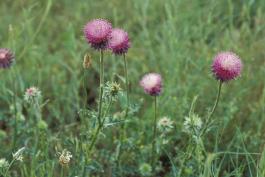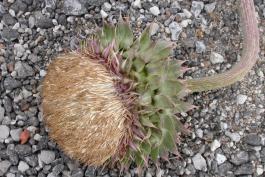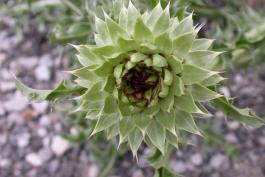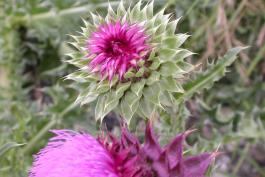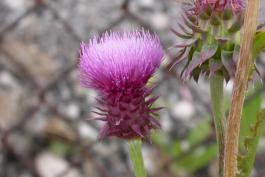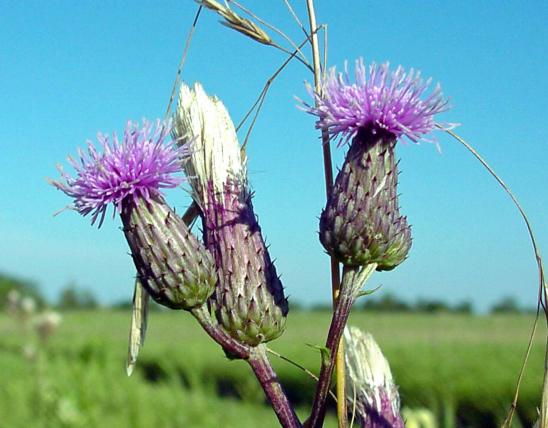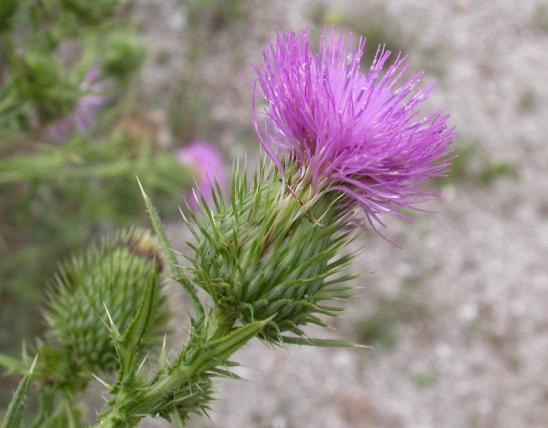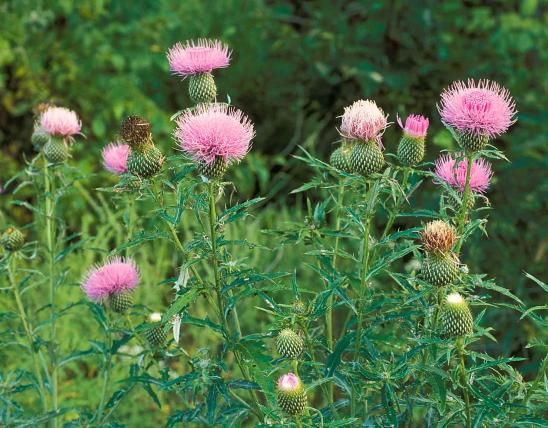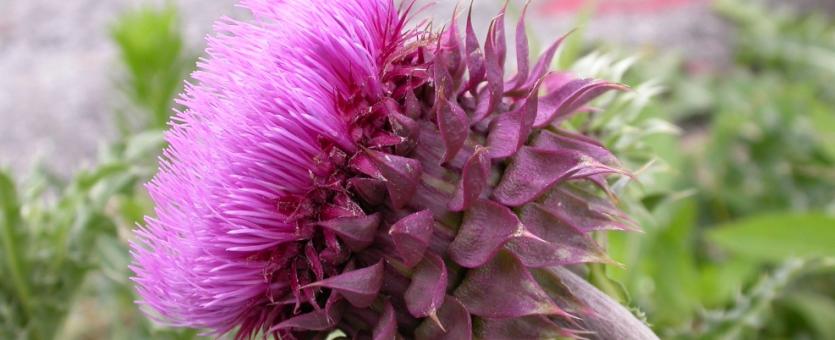
Musk thistle is a large, spiny biennial with rose-purple flower heads up to 2½ inches wide. The stems are commonly winged with spiny leaf tissue. The plant forms basal rosettes during its first year, which have deeply lobed leaves that are up to 10 inches long and 4 inches wide, and have a prominent, nearly white center vein. During the second year, an upright flowering stalk grows that has smaller, very spiny leaves. The flower heads are mostly solitary and nod at the branch tips. At the base of each flower head are numerous, spine-tipped bracts, ⅛ to ⅜ inch wide, that curve away from the heads. Blooms June through October. A single plant can produce 11,000 seeds, spread by silky parachutes.
Similar species: Our native thistles have strongly whitened undersides to the leaves, whereas this and two other exotic thistles have both sides of the leaves the same green color. The exotics also tend to have heavily branched stems and more numerous flower heads per stem. Our native thistles are a valuable part of our native flora, providing food for monarch butterflies and food and nesting material for goldfinches.
Height: to 6 feet.
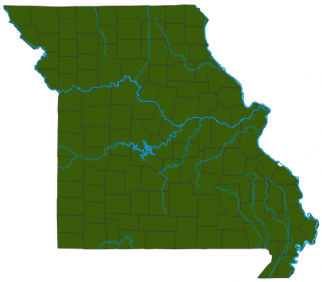
Widespread, probably throughout the state.
Habitat and Conservation
Musk thistle is found in waste ground, old fields and pasture, and along roads and railroads. It is a major weed in range and pasture land, a nuisance pest along rights-of-way, and a looming nightmare for lands in conservation reserve programs. It can invade native grasslands, even where existing dense prairie vegetation exists. Glade communities are also prone to infestation, especially those with grazing histories and lacking buffers of undisturbed land.
Status
Invasive. Musk thistle is a native of Europe and Asia that was introduced into the United States as early as the 1850s. It is now widely naturalized in the United States and Canada and is a bane to farmers. It, along with other invasive species, costs our country billions to battle.
Life Cycle
Musk thistle can be a biennial, a winter annual, or an annual. Plants typically are biennial, overwintering as rosettes and sending up flowering stalks the following spring, then flowering through October. Seeds mature and can begin dispersing in 7-10 days of flowering. A single plant can produce as many as 11,000 seeds. The seeds can remain viable for up to ten years.
Control
Human Connections
Musk thistle infestations are economically damaging because they compete with crops for light, space, nutrients, and water. In pastures, its spiny foliage renders it unsuitable for livestock.
Ecosystem Connections
Musk thistle spreads its dense basal rosette and crowds out native plant and grassland species through competition for resources. Grazers avoid this species, which gives musk thistle another competitive advantage over native plants and grasslands.
